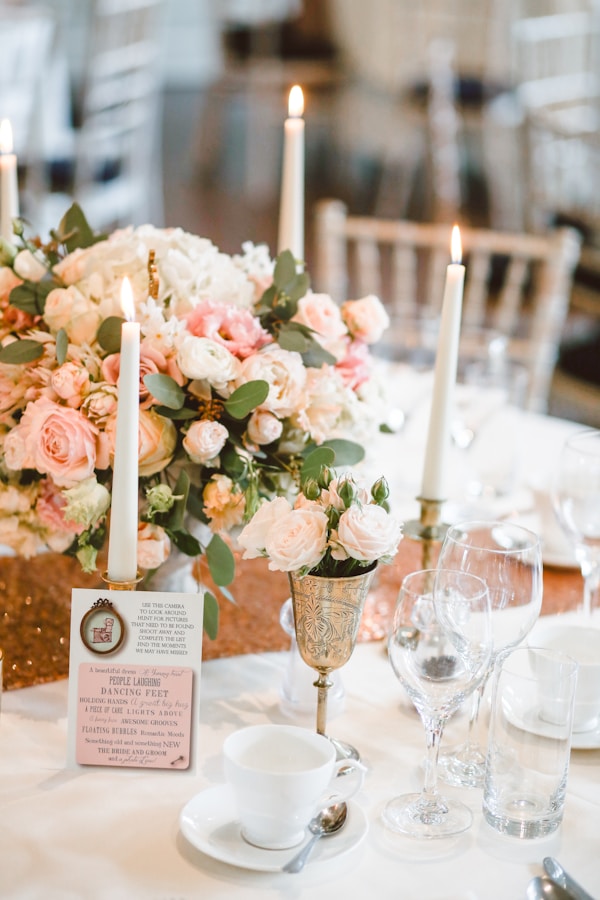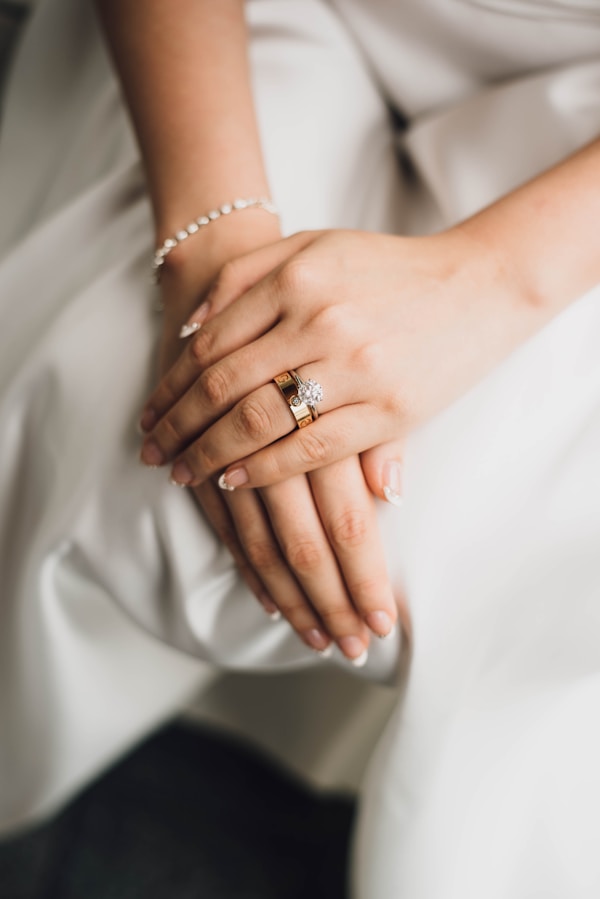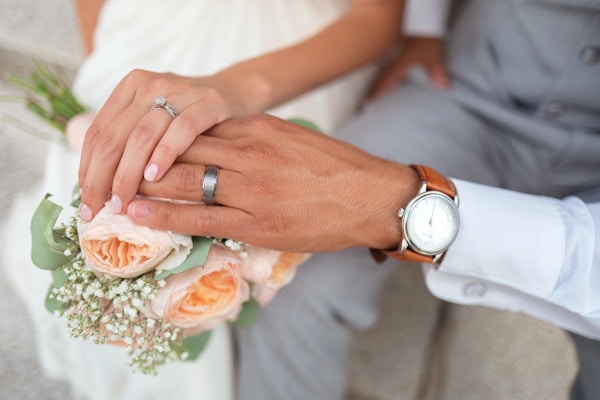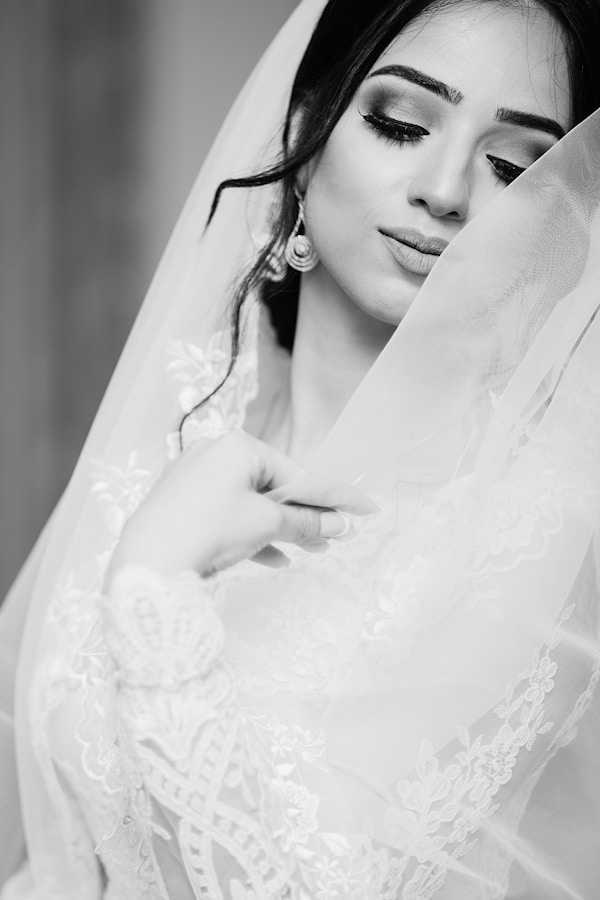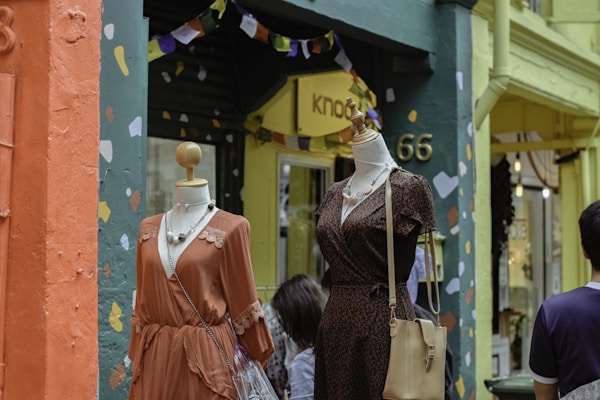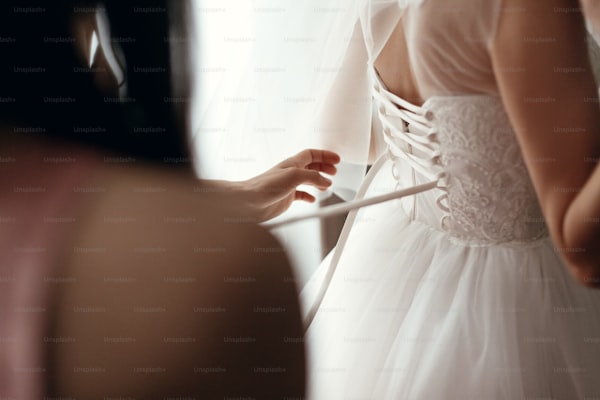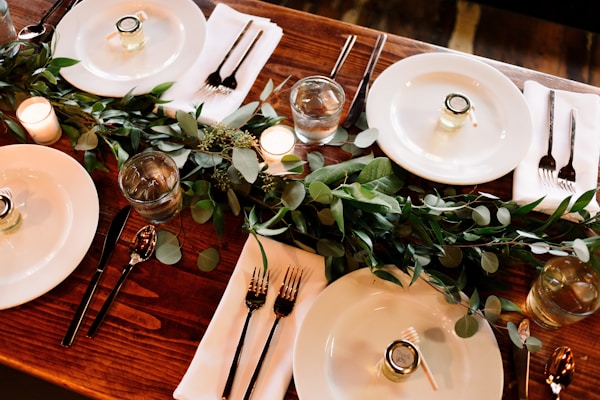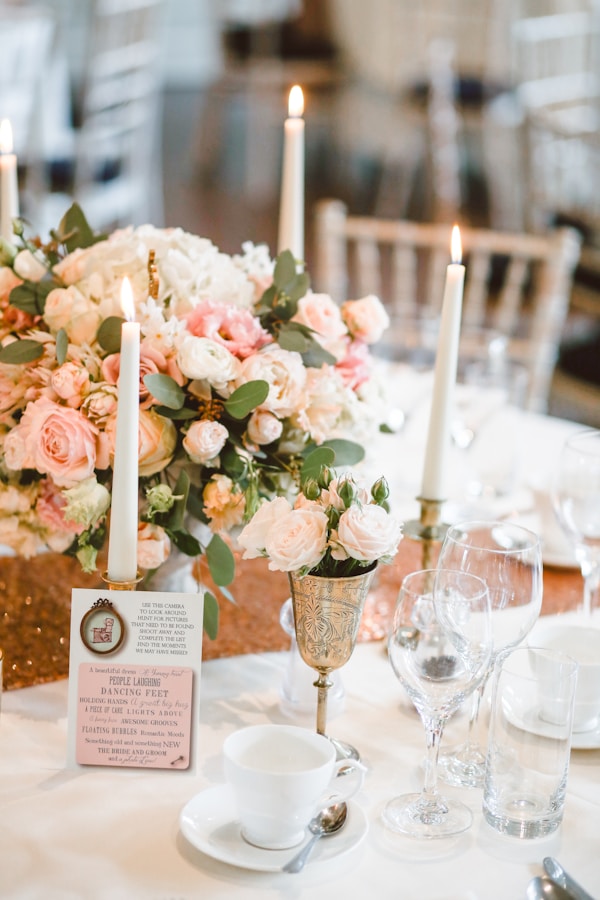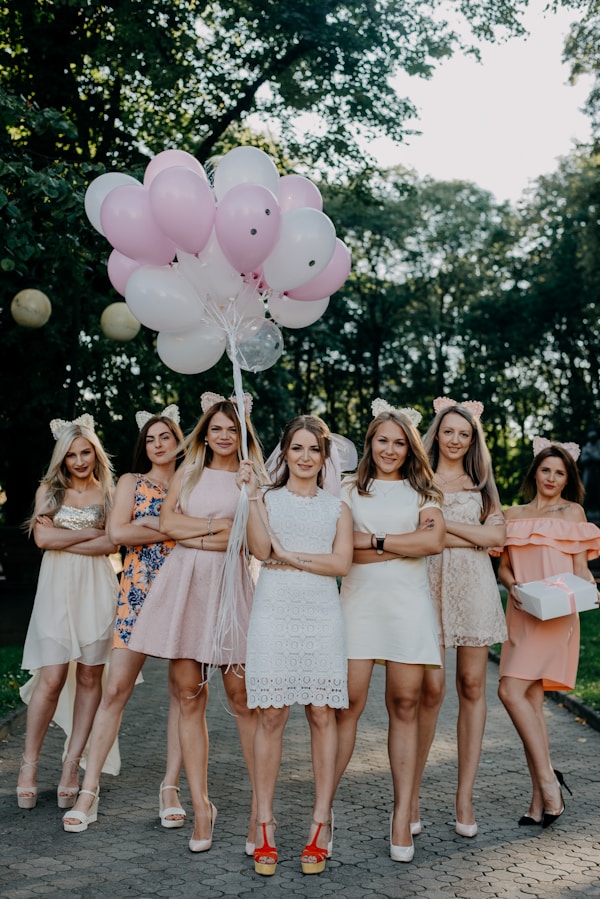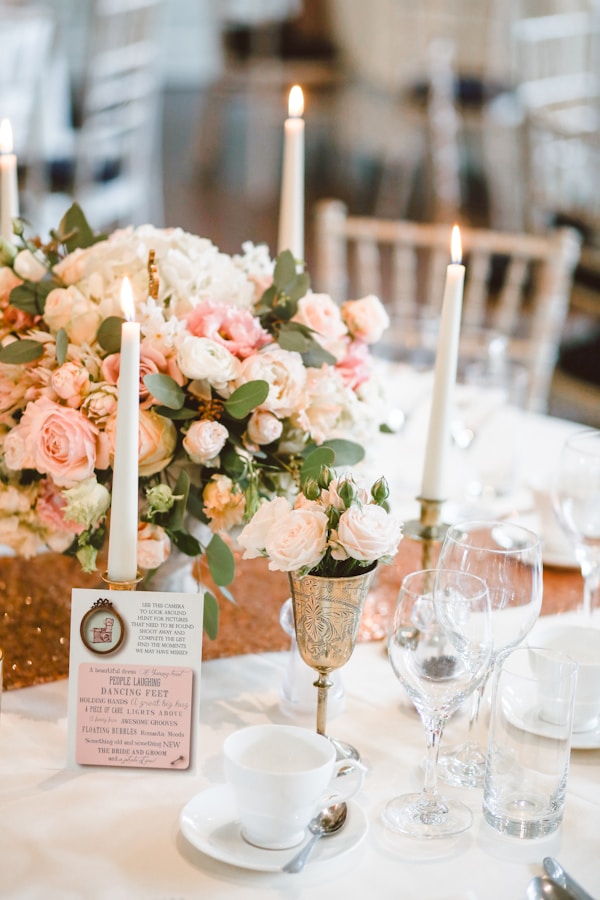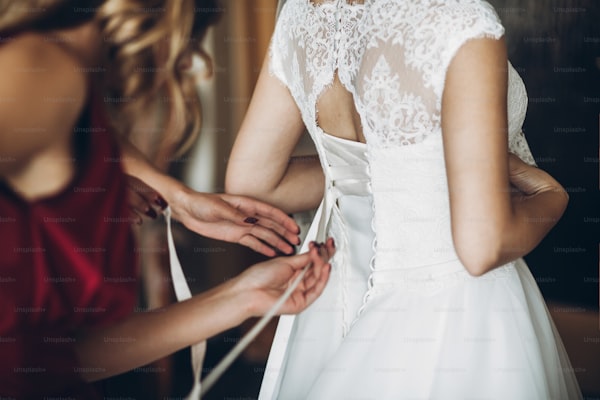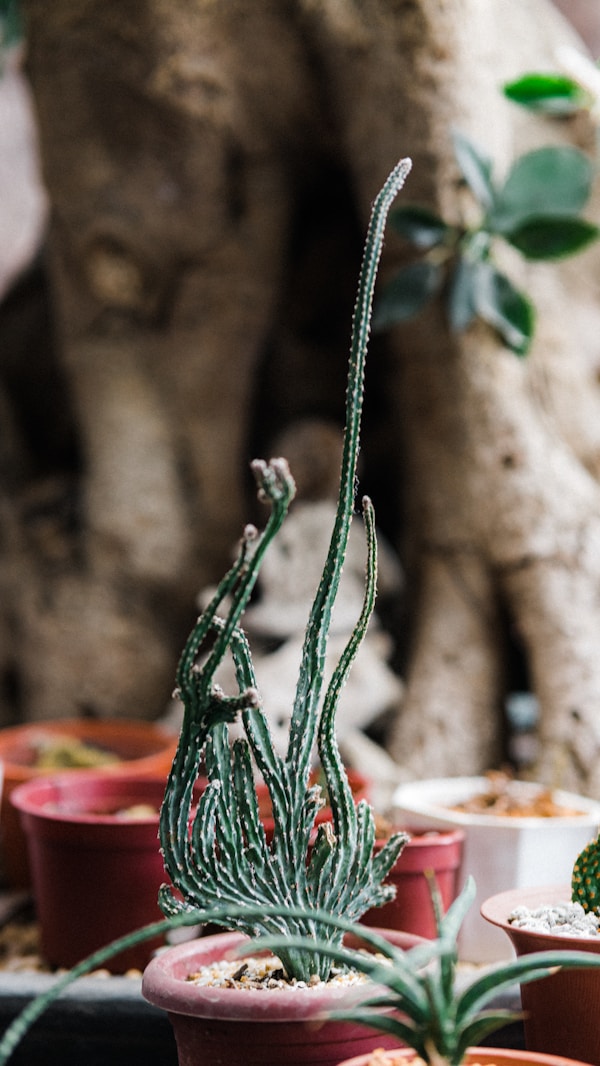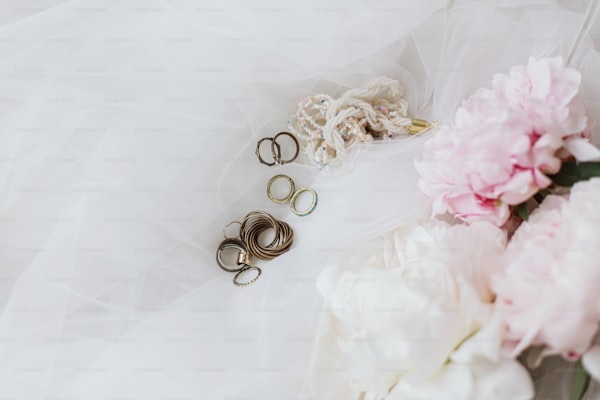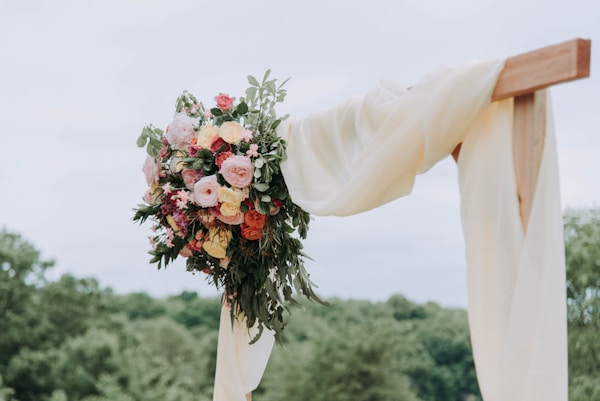Essential Transportation Tips for Wedding Gowns to Ensure a Flawless Day
IntroductionPlanning a wedding is a remarkable experience filled with joy, excitement, and countless details. One significant aspect that is often overlooked is the transportation of the wedding gown. Whether you’re the bride, a bridesmaid, or a wedding planner, ensuring that the gown arrives in perfect condition is crucial. The following article offers essential transportation tips for wedding gowns, ensuring they remain pristine until the big day.Understanding the Importance of Proper TransportationWedding gowns are often intricate and sometimes delicate creations that require special care during transportation. Factors like climate, handling during transit, and the quality of the garment bag can significantly impact the gown’s condition. Poor transportation can lead to wrinkles, dirt, or even damage, making it essential to plan this aspect carefully.Climate ConsiderationsWeather conditions play a critical role in how a gown is transported. Here are a few tips based on varying climates:ClimateTransportation TipsHigh HumidityUse breathable garment bags to prevent moisture accumulation.Cold WeatherSeal the gown in a protective cover to guard against frigid temperatures and static.Hot WeatherAvoid leaving the gown in a parked vehicle; use air conditioning to maintain a stable environment.Choosing the Right Garment BagOne of the most critical aspects of transporting a wedding gown is selecting an appropriate garment bag. Here are some recommendations:Material: Look for high-qua...
The Ultimate Guide to Bridal Garment Care: Preserving Your Dream Dress
Introduction to Bridal Garment CareAs a bride, there's nothing quite like the moment you slip into your wedding dress. It's a symbol of love, commitment, and one of the most memorable days of your life. However, once the wedding day is over, proper care for your bridal garment becomes essential to preserving its beauty and integrity. In this article, we will cover everything you need to know about bridal garment care, including cleaning, storage, and maintenance to ensure your dress remains a cherished keepsake for years to come.Understanding Your Bridal GarmentBefore we dive into the specifics of bridal garment care, it’s crucial to understand that weddings often involve intricate fabrics, delicate embellishments, and various styles. Here are some common types of bridal garments you might encounter: Ball Gowns: Featuring voluminous skirts and fitted bodices, these dresses often have several layers of fabric. A-line Dresses: Universally flattering, A-line dresses have a fitted top and flowy skirt. Mermaid and Trumpet Styles: These dresses hug the curves before flaring out at the knees. Sheath Dresses: Simple and elegant, sheath gowns highlight the body's natural shape. Cocktail Dresses. Often shorter in length and can be made of various materials.Common Challenges in Bridal Garment CareBridal garments face unique challenges in care due to factors such as fabric sensitivity, embellishment fragility, and the emotional weight attached to these dresses. Issues brid...
The Ultimate Guide to Bridal Gown Cleaning Services: Preserve Your Precious Memories
Why You Need Bridal Gown Cleaning ServicesYour wedding day is one of the most significant days of your life, and your bridal gown is a cherished symbol of that special occasion. As such, ensuring the preservation and cleanliness of your gown post-wedding is crucial. Bridal gown cleaning services play an essential role in maintaining the integrity and beauty of your garment for years to come.Understanding Bridal Gown Cleaning ServicesBridal gown cleaning services specialize in the careful handling and cleaning of wedding dresses to remove dirt, stains, and any other residues accumulated during your big day. These services not only clean but also preserve the gown for future generations. The methods used in professional cleaning ensure that the delicate fabrics and intricate details remain unscathed.Types of Bridal Gown Cleaning MethodsMethodDescriptionWet CleaningA gentle method using water and mild detergents, suitable for most fabrics.Dry CleaningA solvent-based cleaning process that is effective for delicate fabrics but needs careful handling.Hand CleaningA thorough method where cleaners carefully spot-treat and clean the gown by hand.The Importance of Timely CleaningOne of the most important aspects of bridal gown cleaning is timing. As soon as your wedding is over, it’s crucial to get your gown cleaned within a month. The longer you wait, the harder stains become to remove. Common stains such as champagne, makeup, and dirt can set in and become permanent, leading to irrev...
The Ultimate Guide to Bridal Gown Care Instructions
Preserving Your Bridal Gown: Essential Care InstructionsYour wedding day is one of the most memorable days of your life, and your bridal gown plays a central role in that celebration. Ensuring that your dress remains in pristine condition before, during, and after the wedding is crucial. In this comprehensive guide, we will explore bridal gown care instructions, helping you understand how to maintain the beauty and integrity of your gown.Understanding Your Bridal Gown FabricBefore diving into specific care instructions, it's imperative to know the fabric of your bridal gown. Each fabric type comes with its own set of care requirements. Here are some common bridal gown fabrics:FabricCare InstructionsSatinDry clean only; avoid water stains.OrganzaLightly steam to remove wrinkles; avoid heavy fabrics.LaceHand wash with cold water; air dry flat to prevent distortion.TulleSpot clean; store away from direct sunlight to prevent fading.Pre-Wedding Care: Preparing for the Big DayTo ensure your bridal gown is in top shape for your wedding, follow these essential care instructions:1. Proper Storage Before the WeddingWhen you receive your gown, make sure to store it correctly:Keep the gown in a breathable garment bag to avoid moisture buildup.Store it in a cool, dark place to prevent discoloration.Hang the gown from the bust area to avoid stretching the fabric.2. Final Fitting and AdjustmentsSchedule your final fitting about two weeks before the wedding. This will allow enough time for a...
Essential Bridal Gown Dry Cleaning Tips: Preserve Your Dream Dress
Bridal Gown Dry Cleaning Tips to Keep Your Dress Looking FlawlessYour bridal gown is one of the most important pieces of clothing you will ever wear. It embodies your dreams, memories, and all the beautiful moments of your wedding day. After the excitement of the ceremony and reception, the task of preserving your gown may feel daunting. However, with the right bridal gown dry cleaning tips, you can ensure that your dress remains in pristine condition for years to come.Understanding the Importance of Bridal Gown Dry CleaningMany brides overlook the necessity of professional dry cleaning after the big day. However, your gown can accumulate dirt, stains, and odors that need to be addressed promptly. Here are some reasons why dry cleaning is essential:Stain Removal: Wine, food, and even makeup can leave behind stubborn stains that require special treatment.Preservation: Proper cleaning can prevent fabrics from yellowing or becoming damaged over time.Future Use: If you plan to pass down your gown or use it for future celebrations, it should be cleaned and preserved correctly.Bridal Gown Dry Cleaning Tips1. Choose a Professional Dry CleanerThe first step in preserving your gown is selecting the right dry cleaner. Look for specialists who have experience with bridal gowns. Consider these factors:Reputation: Read reviews and ask for recommendations from friends and family.Certifications: Select a cleaner with recognizable certifications in garment care.Experience: Inquire about thei...
Essential Bridal Dress Cleaning Tips for a Flawless Wedding Memory
Wedding dresses are not just garments; they are cherished memories that symbolize love and commitment. After the big day, proper care is essential to preserve the beauty and integrity of the dress. In this article, we will explore invaluable bridal dress cleaning tips to ensure your gown remains in pristine condition for years to come. We’ll touch on methods of cleaning, storage tips, and common pitfalls to avoid, ensuring your dress is always ready for the next special occasion.Understanding the Importance of Cleaning Your Bridal DressAfter a wedding filled with laughter, dancing, and good food, it’s common for bridal dresses to accumulate dirt and stains. Proper cleaning is crucial because:Prevents Permanent Stains: Wine spills, makeup smudges, and dirt can become permanent if not treated in time.Maintains Fabric Integrity: Different fabrics require different cleaning methods; improper care can weaken the material.Retains Value: A well-maintained bridal dress can last for generations, thus holding sentimental and financial value.Initial Steps After the WeddingImmediately following your wedding festivities, take some crucial steps to start the cleaning process:Do Not Delay: Aim to clean the dress within 48 hours after the event. The longer you wait, the harder it becomes to remove stains.Hang the Dress: Use a padded hanger to avoid creasing and place it in a cool, dry area away from direct sunlight.Spot Clean: If you notice specific stains, tackle them immediately using a cl...
Lace Wedding Dress Cleaning Tips: Preserve Your Dream Dress for a Lifetime
The Importance of Proper Lace Wedding Dress CareWhen it comes to weddings, every detail matters, especially the wedding dress. A lace wedding dress is often a centerpiece of the bride's attire, symbolizing beauty and elegance. However, after the joyous occasion, it's crucial to know the best cleaning practices to preserve its delicate fabric. This article will provide you with comprehensive lace wedding dress cleaning tips to ensure your cherished garment remains in pristine condition for years to come.Understanding Lace Wedding Dress FabricsLace is a beautiful yet delicate fabric that requires special attention when it comes to cleaning. It is typically made from threads of cotton, silk, or synthetic fibers, and often embellished with beading or embroidery. Knowing the type of lace fabric used in your dress can help determine the best cleaning methods. Here are some common lace types:Lace TypeCharacteristicsCleaning MethodChantilly LaceSoft, lightweight, and intricate in designHand wash or dry cleanAlençon LaceHeavy, embroidered lace usually featuring floral patternsDry clean recommendedVenise LaceHeavier lace with a raised design, often used as an appliqueHand wash or delicate cycleGeneral Tips for Cleaning Your Lace Wedding Dress1. Always Check the Care LabelThe first step in cleaning your lace wedding dress is to always check the care label attached to it. The manufacturer usually provides specific instructions for cleaning, which should take precedence over general tips....
Ultimate Guide: How Do I Clean a Wedding Dress at Home?
Cleaning Your Wedding Dress at Home: Is It Possible?Many brides cherish their wedding dresses, viewing them as a symbol of love and celebration. However, once the festivities are over, the thought of cleaning that exquisite gown can be daunting. In this comprehensive guide, we will explore how to clean a wedding dress at home, ensuring your treasured garment stays in pristine condition. To help brides navigate this process, we'll also address common questions and important tips to keep in mind.Why Consider Cleaning Your Wedding Dress at Home?Cleaning your wedding dress at home can save you significant money. Professional cleaning services can range from $150 to $400, depending on the fabric and embellishments. In addition, it allows you to personally ensure that your dress is treated with care. However, this option is only practical for dresses made from certain fabrics without intricate embellishments.Assessing Your Wedding DressBefore diving into the cleaning process, assess the condition of your wedding dress. Inspect for stains, yellowing, or any damages such as loose beads or tears. The fabric will vary, from satin and lace to tulle and chiffon, and understanding this will help you choose the best cleaning method.Common Questions Brides AskQuestionAnswerCan I use bleach on my wedding dress?No, bleach can damage delicate fabrics and cause discoloration.How do I remove grass stains from my gown?Use a mixture of white vinegar and water to blot the stain before washing.Is it...
Ultimate Guide on How to Fix a Stained Wedding Dress Before the Wedding
Your wedding day is one of the most important events in your life, and ensuring that your wedding dress looks perfect is crucial. However, accidents can happen, and you may find yourself asking, “How do I fix a stained wedding dress before the wedding?” In this comprehensive guide, we will explore various methods for removing stains, preventative measures, and professional services you can consider. By the end, you'll be equipped with the knowledge to handle any wedding dress emergencies.Understanding Stains and Their RemovalDifferent types of stains require different treatments. Here’s a brief overview of common stains you might encounter:Stain TypeCommon SourcesRecommended TreatmentFoodSpills from the reception mealBlot with a clean cloth, then use a mild detergent solutionMakeupCosmetics from touch-upsUse a makeup remover specific for fabricsRed WineCelebratory toasts gone wrongPour salt on the stain, then rinse with cold water; alternatively, use club sodaGrassOutdoor weddingsApply a mix of vinegar and dish soap, then launderImmediate Steps to Take When You Notice a StainWhen you find a stain on your wedding dress, panic can set in. However, taking immediate action can save your dress. Follow these steps:Don't Rub: Rubbing the stain can spread it further. Instead, gently blot the area with a clean cloth.Identify the Stain: Knowing what type of stain you are dealing with will guide your approach.Act Quickly: The sooner you can treat the stain, the better your chances of co...
How to Clean a Vintage Wedding Dress: A Comprehensive Guide
IntroductionCleaning a vintage wedding dress can seem like a daunting task, especially if it holds sentimental value. Many brides are unsure of how to restore their beautiful, delicate garments without causing damage. This guide will provide you with step-by-step instructions, tips, and recommendations for ensuring your dress remains as stunning as the day you wore it.Understanding Your Vintage Wedding DressBefore diving into the cleaning process, it’s essential to understand the materials and construction of your vintage wedding dress. Vintage dresses can be made from a variety of fabrics, such as silk, satin, lace, or tulle. Each material has its cleaning requirements, which is why knowing your fabric composition is crucial. Additionally, many vintage dresses may have intricate embellishments, including beading or embroidery, which require special attention.How to Identify Fabric TypesFabric identification is the first step in the cleaning process. Here are some common types of fabrics and how to identify them:Silk: Soft with a shiny appearance; often changes color under direct light.Satin: Has a glossy front and dull back; smooth to the touch.Lace: Delicate with a stitched or patterned design; often sheer or transparent.Tulle: Fine, soft netting; commonly used for skirts or veils.When to Clean Your Vintage Wedding DressTiming is everything when it comes to cleaning your vintage wedding dress. Ideally, you want to clean it as soon as possible after the event to prevent stai...
What Should I Do If My Wedding Dress Is Damaged Before the Wedding?
Understanding the Wedding Dress DilemmaYour wedding day is one of the most important events of your life, and your wedding dress is often the centerpiece of that special day. However, accidents can happen, and you may find yourself asking, “What should I do if my wedding dress is damaged before the wedding?” This article explores practical steps to take when faced with this distressing situation, offering tips that can help you navigate the repair process and ensure your dress is ready for your big day.Types of Damage to a Wedding DressBefore we delve into the solutions, it’s important to identify the types of damage your wedding dress might suffer. Whether it's a tear, stain, or structural issue, understanding the specific problem can help you decide on the best course of action.Type of DamageExamplesRepair DifficultyTearFabric rip or snagModerateStainFood, drink, or makeupVariesAlteration IssuesIncorrect fit or hemModerate to DifficultStructural IssuesBroken zippers or missing embellishmentsDifficultImmediate Steps to Take After DamageOnce you discover that your wedding dress has been damaged, it’s crucial to act quickly to minimize the impact. Here are the steps you should take:1. Remain CalmYour immediate reaction may be panic, but try to remain calm. Many damage issues can be resolved with the right approach.2. Assess the DamageTake a close look at the damage. Is it a small tear, a large hole, or a stain? Understanding the extent of the damage will help you decide what t...
How Do I Clean My Wedding Dress After the Wedding? A Complete Guide
Preserving Your Treasure: Cleaning Your Wedding DressYour wedding dress is one of the most significant and cherished garments you will ever own. After the big day, it's natural to want to preserve it in its pristine state. So, how do you clean your wedding dress after the wedding? This comprehensive guide will take you through the process, tips, and more to ensure your beloved dress remains beautiful for years to come.Why Cleaning Your Wedding Dress is ImportantWedding dresses are often made from delicate fabrics and adorned with intricate embellishments. Proper cleaning is essential not just for aesthetics but also to prevent any stains from setting, which can occur if the dress is left uncleaned for too long. Factors such as perspiration, makeup, and food spills can all contribute to potential stains. Here are a few reasons why you should consider cleaning your dress promptly: Preservation: Keeping your dress in good condition for future generations. Stains: Avoiding permanent stains will save you time and money later. Smell: Preventing any unpleasant odors from developing.When Should You Clean Your Wedding Dress?It's advisable to have your wedding dress cleaned as soon as possible after the ceremony—ideally within a few days. However, if you're unable to do so, cleaning it within a month is still better than waiting for several months or years.How to Clean Your Wedding DressHere are the primary methods to clean a wedding dress. The right choice depends on various factor...
Essential Tips to Maintain the Integrity of Delicate Beadwork During Wedding Dress Cleaning
Understanding the Importance of Protecting BeadworkYour wedding dress is not just a garment; it carries memories of one of the most important days of your life. Among the many beautiful details that can adorn a wedding dress, beadwork stands out as particularly delicate and valuable. This article will guide you on how to maintain the integrity of delicate beadwork during wedding dress cleaning, ensuring that your gown remains as breathtaking as it was on your special day.What Makes Beadwork So Delicate?Before diving into cleaning techniques, it’s important to understand why beadwork requires special care. Beads can be made from a variety of materials—glass, crystal, or even plastic—and they may be attached with threads or glued. This variety makes them vulnerable to damage from excessive moisture, heat, or rough handling.Common Types of BeadworkThe most common types of beadwork in wedding dresses include: Rhinestones Sequins Freshwater pearls Glass beadsEach of these materials has its unique cleaning requirements. Understanding these differences is crucial when you seek to maintain their integrity.Steps to Prepare for CleaningProper preparation is key to ensuring that the cleaning process won't damage beadwork. Here are steps to take before you embark on cleaning your wedding dress:Preparation StepsDescriptionInspect the DressExamine the dress closely for loose beads or any signs of wear.Document the DesignTake photographs of the beadwork for future reference.Check Care I...
Essential Steps to Protect Wedding Dress Embellishments During Dry Cleaning
Wedding dresses are often adorned with delicate embellishments, such as beads, sequins, and lace. These intricate details not only enhance the beauty of the gown but also require special care when it comes to dry cleaning. In this article, we will explore the essential steps taken to protect wedding dress embellishments during the dry cleaning process, ensuring that your special attire remains in impeccable condition for years to come.Understanding Wedding Dress EmbellishmentsBefore we dive into the protective measures, it's important to understand the types of embellishments commonly found on wedding dresses. Here are a few examples: Beads: Used to add sparkle and dimension Sequins: Reflective elements that create a glamorous effect Lace: Delicate fabric often added to sleeves or bodices Appliqués: Decorative pieces sewn onto the fabric, often made of silk or laceThe Importance of Professional Dry CleaningWhile you may be tempted to clean your wedding dress at home, professional dry cleaning is highly recommended. Professional dry cleaners have the experience and equipment needed to handle delicate fabrics and intricate embellishments. Therefore, it is essential to choose a reputable dry cleaner with experience in handling wedding dresses.Steps Taken During the Dry Cleaning ProcessBelow are the critical steps taken to protect wedding dress embellishments during dry cleaning:StepDescription1. InspectionThe dry cleaner thoroughly inspects the dress for stains and d...
Unveiling the Best Methods for Removing Stains from a Wedding Dress
Wedding dresses are often cherished possessions, encapsulating memories of one of the most significant days in a person's life. However, beautiful as they are, they are equally susceptible to stains. In this guide, we will explore the best methods for removing stains from a wedding dress, ensuring that your prized garment stays pristine for years to come.Understanding the Fabric of Your Wedding DressBefore diving into stain removal techniques, it's crucial to understand the common fabrics used in wedding dresses. Most wedding dresses are made from luxurious materials like silk, satin, lace, and tulle. Each fabric requires a specific approach to stain removal to avoid damage.Common Stains on Wedding DressesStains can occur from various sources, including food, beverages, makeup, and even environmental factors. Here are some common stains you might encounter:Red wineMakeup smudgesGrease and oilGrass stainsWatermarksBest Methods for Stain RemovalNow let's delve into the effective methods for removing these pesky stains from your wedding dress.1. **Red Wine Stains**Red wine stains can be particularly challenging, but prompt action can make a significant difference. Here’s how to tackle them:Materials Needed:White wine, salt, or club sodaSteps:Blot the stain with a paper towel to absorb excess wine.Pour white wine over the stained area to neutralize the red wine.Sprinkle salt or club soda on top to absorb the liquid.Rinse thoroughly and check for any remaining stain before drying....
How Beadwork is Applied to a Wedding Dress for Maximum Durability
Wedding dresses hold a special place in every bride's heart, symbolizing love, commitment, and beauty. An essential component that contributes to the elegance of a wedding dress is beadwork. But how is beadwork applied to a wedding dress to ensure durability? This article will explore the techniques, materials, and care tips involved in creating beadwork that lasts, while also answering related queries that prospective brides may have. The Importance of Beadwork in Wedding Dresses Beadwork adds a luxurious touch to wedding dresses, transforming a simple design into a breathtaking masterpiece. However, it goes beyond aesthetics. The right beadwork technique can significantly enhance the durability of the wedding dress. Brides want their dress to make an impact but also withstand the test of time, especially if they wish to preserve it as a cherished memento. Types of Beadwork Techniques Several techniques are commonly used in beadwork for wedding dresses. Here are some of the most popular methods: Hand Beading: This technique involves applying beads by hand, usually with a needle and thread. It allows for precise placement but can be time-consuming. Machine Beading: Some designers opt for machine beading, where beads are attached using sewing machines. This method is faster and more consistent but may be less intricate. Appliqué Beading: In this method, beads are sewn onto fabric that has been cut into specific shapes and then attached to the dress. This technique adds dimen...
How to Prevent Beadwork from Catching on a Wedding Dress: Essential Tips for a Seamless Wear
The Dilemma of Beadwork and Wedding DressesEvery bride dreams of looking perfect on her wedding day, and the right dress plays a significant role in achieving that vision. Among the many details that make a wedding dress exquisite, beadwork stands out, adding an element of sparkle and elegance. However, one common concern that brides have is: How do you prevent beadwork from catching on a wedding dress during wear? This article will provide invaluable tips and strategies to ensure that your beadwork enhances your look without causing any discomfort.Understanding the IssueBeadwork can be a beautiful addition to a wedding dress, but it can also be a source of frustration. The intricate designs created by beads can snag on delicate fabrics, causing pulls or tears that may ruin the dress's integrity. Therefore, it's critical to address this issue before the big day. Here are some potential factors that contribute to beadwork catching on a wedding dress:FactorDescription1. Fabric TypeCertain fabrics are more prone to snagging than others. Delicate materials like tulle and lace can easily catch on beads.2. Bead Size and TypeHeavy or large beads are more likely to catch on a wedding dress as they create a noticeable texture difference.3. Dress ConstructionPoorly constructed seams or lining can exacerbate the problem of beadwork catching on the main fabric of the dress.Strategies to Prevent Beadwork from CatchingFortunately, there are several preventive measures that brides can take ...
Ensuring the Quality of Sequins and Beads in Wedding Dress Production
IntroductionWhen it comes to creating the perfect wedding dress, every detail matters. One of the most essential aspects is the embellishments, particularly sequins and beads. But how do you ensure their quality before using them in wedding dress production? This article will delve into the methods and guidelines for assessing the quality of sequins and beads to ensure that every wedding dress sparkles with elegance and durability.Understanding the Importance of Quality Sequins and BeadsThe right sequins and beads can transform an ordinary wedding dress into a stunning masterpiece. However, poor-quality embellishments can lead to a range of issues, including fading, breaking, or falling off entirely. This not only affects the appearance of the dress but also the overall satisfaction of the bride on her special day.Characteristics of High-Quality Sequins and BeadsBefore we dive into the testing methods, it’s essential to understand what characteristics define high-quality sequins and beads. Here are several key attributes to consider: Luster: High-quality sequins should reflect light beautifully, creating a shimmering effect. Uniformity: Look for even shapes and sizes; irregularities can indicate inferior quality. Durability: Quality beads and sequins should withstand wear and tear without losing their appearance. Colorfastness: Check if the colors remain vibrant and do not fade or bleed when washed.Methods to Ensure Quality in Sequins and BeadsNow that we know the...
Mastering the Art of Even Distribution: Hand-Sewn Beads on Wedding Dress Bodices
IntroductionCreating a stunning wedding dress is an art that requires meticulous attention to detail, especially when it comes to embellishments like hand-sewn beads. These small decorative elements play a significant role in enhancing the overall look of the dress, particularly on the bodice, which often serves as the focal point. One common inquiry among bridal designers and enthusiasts is, “How do you achieve an even distribution of hand-sewn beads on a wedding dress bodice?” In this article, we will delve into effective techniques, tools, and tips for achieving that perfect bead distribution, ensuring your wedding dress dazzles on the big day.Understanding Bead DistributionEven distribution of beads is crucial for both aesthetic appeal and comfort. Uneven bead placement can lead to a lopsided appearance and may even affect how the dress hangs on the body. To achieve this desired effect, several factors should be considered:Design Layout: Sketch your design to visualize where beads will be placed.Type of Beads: Different sizes and weights of beads can affect the hang and drape.Fabric Characteristics: The type of fabric you choose can influence bead placement and distribution.Preparation for Bead SewingBefore you begin sewing beads onto the bodice, it’s vital to prepare properly. Start by washing and ironing the wedding dress fabric to eliminate any creases. This ensures that all your bead placements are accurate. Additionally, prepare your workspace by arranging all necess...
How to Handle Alterations on a Wedding Dress with Intricate Lace Details
Your Guide to Wedding Dress AlterationsYour wedding dress is one of the most significant pieces of clothing you will ever wear. For many brides, finding the perfect dress with intricate lace details can be a dream come true. However, ensuring it fits flawlessly requires knowledge about handling alterations. In this article, we will explore everything you need to know about altering a wedding dress adorned with lace, as well as tips for finding the right alterations specialist.Understanding Lace Details in Wedding DressesLace is a delicate and beautiful fabric often seen in bridal gowns. However, it presents unique challenges when it comes to alterations. Whether your dress has lace sleeves, trims, or an elaborate lace overlay, any changes you make need to be handled with precision to maintain the integrity of the design.Common Reasons for AlterationsThere are several reasons why brides may need to alter their wedding dresses, especially those with intricate lace details. Some of these reasons include: Size changes: Weight fluctuations might require either letting out or taking in the dress. Gown length: Ensuring the hemline is suitable for the chosen shoes. Structural adjustments: Modifying straps or modifying the bodice for better support. Stylistic changes: Adding or reducing lace to enhance the dress's overall aesthetic.Choosing the Right Alteration SpecialistFinding a professional dedicated to handling delicate fabrics such as lace is essential. Here are tips to consi...

